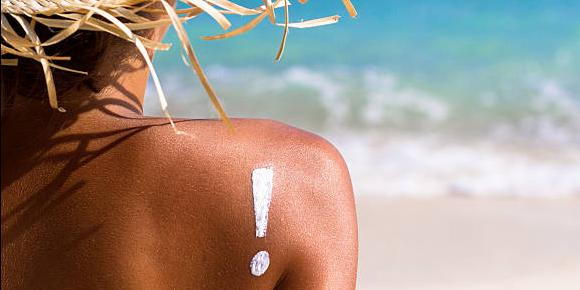
Picture this: a sunny day at the beach, the refreshing ocean breeze caressing your skin as you soak up the warmth of the golden sun. Sounds so idyllic… But wait! There is danger lurking nearby – a threat that kills around 2,000 Americans yearly. Are you thinking about sharks?
Guess again! We’re talking about the sun. Sunscreen is one of the most important sun protection tools. How knowledgeable are you about your sunscreens? Consider this blog your July brief on this important topic.
Sunscreen types
The two main types of sunscreens existing are mineral/physical and chemical.
Mineral/physical
Titanium dioxide and zinc oxide
Acts as a physical barrier, blocking both UVB and UVA rays
No chemical reaction– great for sensitive skin
Chemical
A variety of organic compounds
Absorbs UV rays and converts them into heat, hence, must apply 15 minutes before sun exposure
Lighter, more elegant feel on skin
Decoding SPF: What Does it Mean?
Sun Protection Factor, or SPF, measures ability to protect against UVB rays, the burning ray. SPF 30 sunscreen blocks about 97% of UVB rays, while SPF 50 blocks around 98%. We recommend sunscreens with SPF 30 or higher. It's important to note that SPF only indicates protection against UVB and not UVA, which can also cause skin damage. Look for a sunscreen labeled as "broad-spectrum" for full protection of both rays.
Water resistant/Sweat resistant Claims
The FDA has updated regulations regarding claims on sunscreen labels, banning the terms "waterproof" and "sweatproof". Instead, sunscreen labels may state the product's water resistance for either 40 or 80 minutes. However, even water-resistant sunscreens need to be reapplied regularly, especially after water activities or heavy sweating.
The Evolution of Sunscreen Technology
Today's improved sunscreen formulations offer better texture, appearance, and skin-feel. Modern sunscreens are available in lightweight, non-greasy options that absorb quickly and leave no residue. Advancements in research have led to the development of tinted or moisturizing sunscreens, catering to a variety of skin needs and preferences.
Proper Application
Remember the ears, neck, and the back of hands
About a teaspoon for the face, a shot glass-sized amount for the body
Reapply every two hours or after swimming, excessive sweating, or towel-drying
Remember, next time you’re at the beach, the biggest danger lies not beneath the waves, but above your head. Stay safe and have fun!
